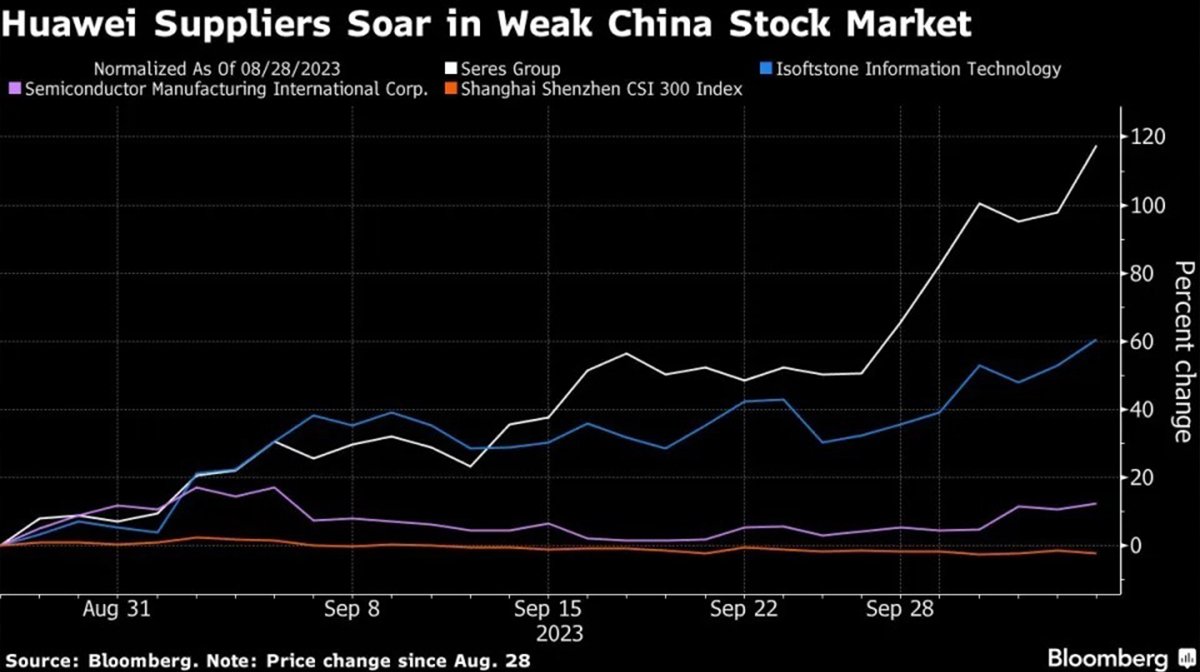Introduction to Huawei Stock Market Symbol
Huawei Technologies, one of the world’s leading telecommunications and technology companies, has significantly influenced the global tech industry. Known for its innovative products, ranging from smartphones and 5G infrastructure to cloud services, Huawei has become a household name. However, despite its vast influence and market presence, Huawei lacks a stock market symbol, which raises questions among potential investors. This article will delve into why Huawei isn’t publicly traded, what it means for investors, and how you can engage with the broader investment landscape surrounding this tech giant.
The Corporate Structure of Huawei
Huawei’s unique corporate structure is the primary reason it lacks a stock market symbol. Founded in 1987 by Ren Zhengfei, Huawei operates as a private company. Unlike many global tech giants such as Apple or Samsung, which are publicly traded, Huawei remains fully owned by its employees through an intricate ownership system.
Huawei’s Employee Stock Ownership Plan (ESOP) allows its workers to own shares in the company. This structure has enabled Huawei to remain privately held, avoiding public scrutiny and the pressures of shareholder demands. The ESOP’s design aims to align the company’s goals with those of its employees, fostering a sense of shared responsibility and commitment to Huawei’s long-term success.
Why Huawei Hasn’t Gone Public
Several factors contribute to Huawei’s decision to remain a private company, which ultimately explains the absence of a stock market symbol:
1. Control and Independence
Maintaining control over corporate decisions remains a significant reason Huawei has not pursued an initial public offering (IPO). As a private company, Huawei can focus on its long-term strategic goals without the pressure to deliver short-term results that often comes with public trading. This control has allowed Huawei to invest heavily in research and development (R&D), leading to its leadership in 5G technology and other innovations.
2. Avoiding Regulatory Scrutiny: Huawei Stock Market Symbol
Public companies must comply with extensive regulations and disclosure requirements, which often expose them to more significant scrutiny from regulators and the public. By staying private, Huawei avoids disclosing sensitive financial information and strategic plans that could be valuable to competitors or lead to regulatory challenges, especially given the geopolitical tensions surrounding its operations.
3. Political and Geopolitical Considerations
Huawei’s position as a leading tech company in China has placed it at the center of geopolitical tensions, particularly with the United States and its allies. Publicly listing Huawei would subject it to the regulations of the exchange on which it was listed, potentially increasing its vulnerability to political pressures. Staying private helps Huawei navigate these challenges with more flexibility and less exposure to external influences.
Investment Opportunities in Huawei-Related Markets
Despite Huawei not being directly accessible through the stock market, investors can still explore opportunities within the broader tech and telecommunications sectors influenced by Huawei’s operations. Here are some alternatives:
1. Investing in Competitors
Huawei’s key competitors, such as Ericsson (ERIC) and Nokia (NOK), are publicly traded companies that operate in similar markets, including telecommunications infrastructure and 5G technology. Investing in these companies provides indirect exposure to the same market dynamics that affect Huawei, particularly in the global race for 5G dominance.
2. Investing in Supply Chain Partners
Huawei relies on a vast network of suppliers for components such as semiconductors, software, and other critical technologies. Companies like Taiwan Semiconductor Manufacturing Company (TSMC) and Qualcomm (QCOM) are integral to the global supply chain that supports Huawei’s product development. These companies are publicly traded and offer an investment avenue connected to Huawei’s operations.
3. Exploring Emerging Markets ETFs
Exchange-traded funds (ETFs) that focus on emerging markets, particularly those centered on China’s technology sector, can provide indirect exposure to companies within Huawei’s ecosystem. These ETFs often include firms that partner with or compete against Huawei in various technology and telecommunications fields.
The Impact of Geopolitical Tensions on Huawei
Huawei’s role in global technology development, particularly in 5G infrastructure, has positioned it at the heart of significant geopolitical debates. The U.S.-China trade war and ongoing concerns about cybersecurity have led to various sanctions and restrictions on Huawei, affecting its business operations and supply chain.
For investors, understanding these geopolitical factors is crucial when exploring Huawei-related markets. Companies within Huawei’s supply chain, or those competing with it, may experience volatility due to changes in trade policies, sanctions, or shifts in global alliances. Staying informed about these developments can help investors make better decisions in a complex and rapidly changing environment.
The Future of Huawei’s Market Presence: Huawei Stock Market Symbol
Huawei’s future, particularly in terms of market expansion and technological innovation, remains a topic of intense interest. The company continues to invest in R&D, exploring new frontiers such as artificial intelligence, cloud computing, and the Internet of Things (IoT). These advancements will likely shape Huawei’s role in the global tech landscape for years to come.
However, Huawei’s continued success will depend on its ability to navigate the challenges posed by global politics, supply chain constraints, and competition. The company’s decision to remain private offers it the flexibility to pursue its strategic goals without the pressures of public markets, but it also limits direct investment opportunities for those interested in its growth.
Conclusion: Huawei Stock Market Symbol
Huawei’s absence from the stock market, despite its global prominence, makes it a unique player in the technology sector. While this private status limits direct investment opportunities, it also provides Huawei with the autonomy to pursue long-term goals and navigate the complex geopolitical landscape. Investors interested in Huawei’s influence on the global tech market can explore alternative avenues, such as investing in its competitors, supply chain partners, or related ETFs. By understanding Huawei’s corporate structure and the broader market context, you can make informed decisions that align with your investment strategy.
FAQs
Why doesn’t Huawei have a stock market symbol?
Huawei remains a private company, fully owned by its employees through an Employee Stock Ownership Plan (ESOP), and therefore does not have a stock market symbol.
Can I invest in Huawei directly?
No, you cannot invest in Huawei directly since it is not publicly traded. However, you can explore investment opportunities in related companies or industries that interact with or compete against Huawei.
What are some alternatives to investing in Huawei?
Investing in Huawei’s competitors, such as Ericsson or Nokia, or in its supply chain partners like TSMC and Qualcomm, provides indirect exposure to the markets influenced by Huawei.
How does Huawei’s private status benefit the company?
Staying private allows Huawei to maintain control over its strategic decisions, avoid regulatory scrutiny, and navigate geopolitical challenges with greater flexibility.
What impact do geopolitical tensions have on Huawei’s business?
Geopolitical tensions, particularly between the U.S. and China, have led to sanctions and restrictions that affect Huawei’s operations and its global supply chain. These tensions can influence the broader market dynamics in which Huawei operates.
Is there a chance Huawei might go public in the future?
While there has been speculation, Huawei has shown no significant indication of planning to go public. Its private ownership structure aligns with its strategic goals and current operating environment.











